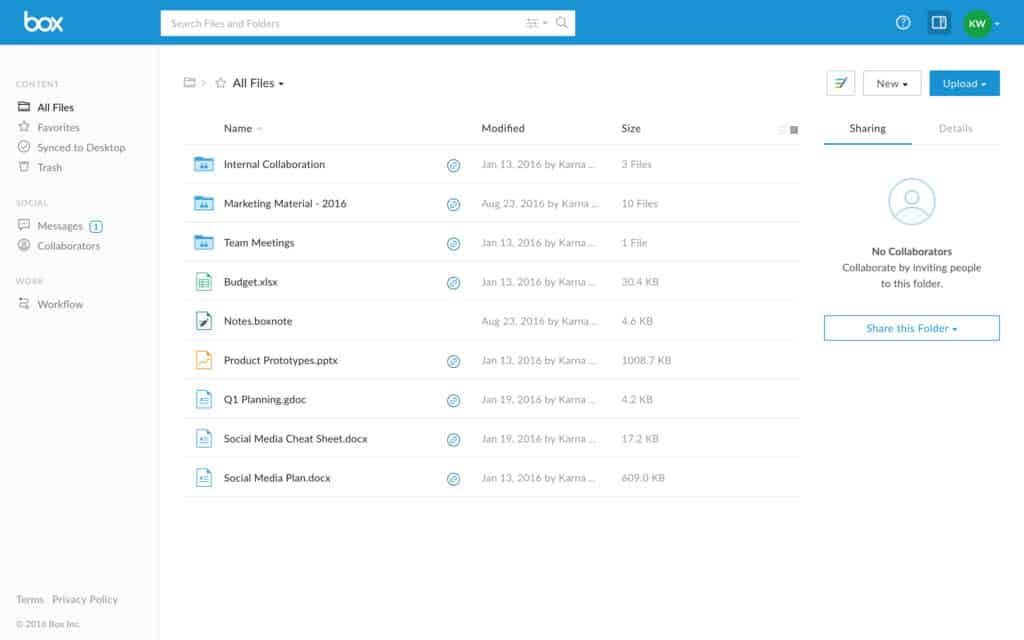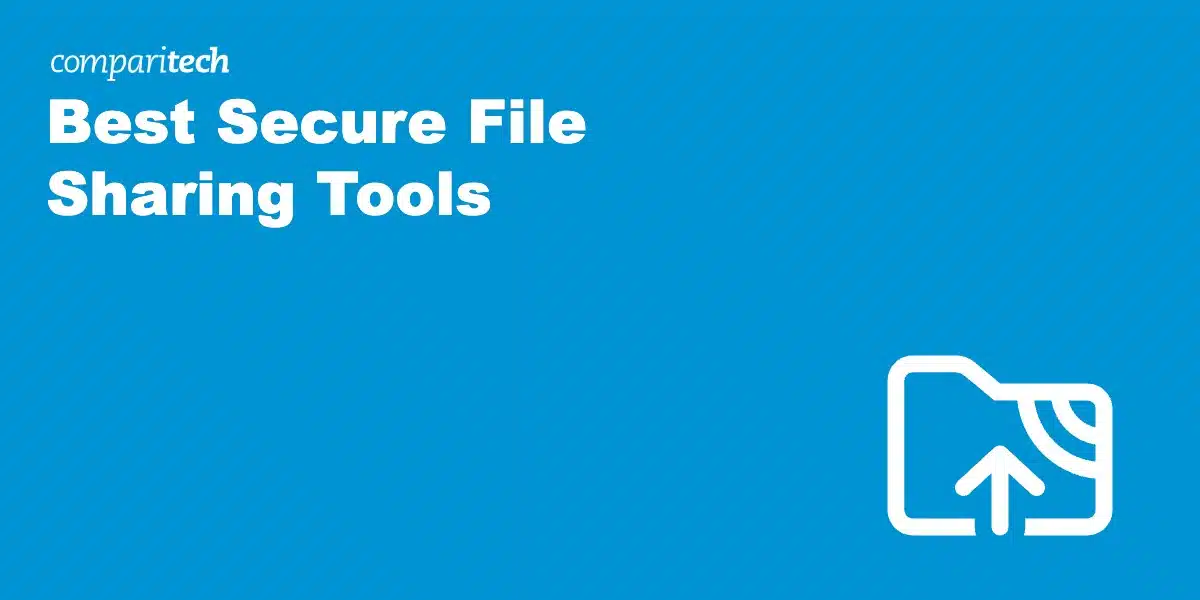Best Secure File Sharing Software: Safeguarding Your Data with Confidence
When it comes to ensuring the security of your shared files, choosing the best secure file sharing software is crucial in today's digital landscape. From end-to-end encryption to robust access controls, these tools provide peace of mind for individuals and businesses alike.
Let's delve into the world of secure file sharing software and explore what sets the best options apart.
Introduction to Secure File Sharing Software
Secure file sharing software refers to tools and platforms that enable users to securely share files and documents with others. This software employs encryption and other security measures to protect sensitive data from unauthorized access or breaches.In today's digital age, where data privacy and security are paramount, using secure file sharing software is crucial.
With the increasing number of cyber threats and data breaches, organizations and individuals need to ensure that their confidential information is safeguarded when being shared online.Various industries heavily rely on secure file sharing software to protect their sensitive data. Industries such as healthcare, finance, legal, and government sectors deal with highly sensitive information that must be securely shared with authorized parties.
By using secure file sharing software, these industries can prevent data leaks, maintain compliance with regulatory requirements, and protect their reputation.
Industries that heavily rely on secure file sharing software
- Healthcare: Healthcare organizations need to securely share patient records, test results, and other medical information with authorized healthcare providers while complying with HIPAA regulations.
- Finance: Financial institutions share sensitive financial data, customer information, and transaction details securely to prevent fraud and financial crimes.
- Legal: Law firms share confidential legal documents, contracts, and case files with clients and partners, requiring a high level of security and confidentiality.
- Government: Government agencies exchange classified information, sensitive documents, and national security data securely to protect against cyber threats and espionage.
Key Features to Look for in Secure File Sharing Software

When choosing a secure file sharing software, it is crucial to consider certain key features that enhance the security and protection of your shared files. These features play a significant role in safeguarding your sensitive data and ensuring secure collaboration within your organization.
End-to-End Encryption
End-to-end encryption is a fundamental feature that ensures the security and privacy of your shared files. This encryption method encrypts data at the source and decrypts it only at the intended recipient, preventing unauthorized access or interception of the files during transit.
Access Controls
Access controls allow you to define and manage permissions for different users, restricting who can view, edit, or share specific files. This feature helps in maintaining data integrity and confidentiality by ensuring that only authorized individuals have access to sensitive information.
Audit Trails
Audit trails provide a detailed record of file activities, including who accessed, modified, or shared a file, and when these actions took place. This feature enhances transparency and accountability, allowing you to track file interactions and detect any suspicious or unauthorized activities.
Two-Factor Authentication
Two-factor authentication adds an extra layer of security by requiring users to verify their identity using a second authentication method, such as a unique code sent to their mobile device. This feature helps prevent unauthorized access even if a user's login credentials are compromised.
Integration with Data Loss Prevention (DLP) Tools
Integration with DLP tools enables the software to detect and prevent the unauthorized sharing of sensitive data based on predefined policies. This feature helps in enforcing data security measures and compliance with regulatory requirements.
Remote Wipe Capabilities
Remote wipe capabilities allow you to remotely delete files from a device that has been lost, stolen, or compromised. This feature helps in protecting your data from falling into the wrong hands and ensures that sensitive information remains secure even in the event of a security breach.
Top Secure File Sharing Software in the Market

When it comes to secure file sharing software, there are several options available in the market that offer advanced features to ensure the safety of your data. Let's take a look at some of the best secure file sharing software and their key features to help you choose the right one for your needs.
1. Dropbox Business
- Key Features:
- End-to-end encryption
- File recovery and version history
- Granular access permissions
- Integration with popular productivity tools
- Pros:
- User-friendly interface
- Collaboration features
- Scalability
- Cons:
- Costly for larger teams
- Security concerns in the past
2. Google Drive
- Key Features:
- Real-time collaboration
- Strong search capabilities
- Integration with Google Workspace
- File sharing via links
- Pros:
- Generous free storage
- Seamless integration with other Google services
- Easy to use
- Cons:
- Privacy concerns
- Limited control over shared files
3. Microsoft OneDrive for Business
- Key Features:
- Automatic file syncing
- Advanced security features
- Collaboration tools
- Integration with Microsoft 365
- Pros:
- Tight integration with Windows OS
- Large storage capacity
- Versioning and file recovery
- Cons:
- Limited sharing options
- Occasional syncing issues
Security Considerations for File Sharing
When it comes to file sharing, ensuring the security of your data is paramount. There are several common security risks associated with file sharing that users need to be aware of in order to protect their sensitive information.
Common Security Risks Associated with File Sharing
- Unauthorized Access: One of the biggest risks when sharing files is the potential for unauthorized access to your data by malicious actors.
- Data Interception: During the file transfer process, data can be intercepted by cybercriminals, compromising the confidentiality of the information being shared.
- Malware Distribution: Files shared through unsecured channels can contain malware, which can infect your system and lead to data breaches.
Tips on How to Securely Share Files Using Secure File Sharing Software
- Choose a reputable secure file sharing software that offers end-to-end encryption to protect your data from unauthorized access.
- Set strong passwords for your shared files and limit access only to authorized users to prevent data interception.
- Avoid sharing sensitive information over public Wi-Fi networks, as they are more susceptible to data interception by hackers.
- Regularly update your secure file sharing software to ensure that you have the latest security patches and protection against emerging threats.
The Importance of Regular Software Updates and Security Patches
Regular software updates and security patches are crucial in maintaining data security when using secure file sharing software. These updates often contain fixes for known vulnerabilities and security loopholes that cybercriminals can exploit to gain unauthorized access to your files.
By keeping your software up to date, you can ensure that your data remains secure and protected from potential security threats.
Implementation of Secure File Sharing Software
Implementing secure file sharing software in an organization is crucial to protect sensitive data and ensure secure communication. Below are the steps to successfully implement secure file sharing software:
Steps to Implement Secure File Sharing Software
- Conduct a thorough evaluation of different secure file sharing software options available in the market to choose the best fit for your organization's needs.
- Define clear policies and guidelines for using the software, including access control, encryption standards, and data retention policies.
- Train employees on how to use the software securely, including best practices for sharing files, setting permissions, and recognizing potential security threats.
- Integrate the secure file sharing software into existing workflows to ensure seamless adoption and minimal disruption to daily operations.
- Regularly monitor and assess the effectiveness of the software implementation, making necessary adjustments to improve security measures.
Training Employees on Using the Software Securely
- Provide comprehensive training sessions to employees on how to securely use the file sharing software, including tutorials on setting permissions, sharing files securely, and recognizing phishing attempts.
- Encourage employees to ask questions and seek help from IT support whenever they encounter any issues or have doubts about the security of file sharing practices.
- Conduct regular security awareness training sessions to keep employees updated on the latest security threats and best practices for secure file sharing.
Best Practices for Integrating Secure File Sharing Software into Existing Workflows
- Identify key workflows where secure file sharing software can add value and enhance security measures, such as sharing confidential documents with external partners or collaborating on sensitive projects.
- Establish clear protocols for using the software within existing workflows, including guidelines for sharing files, setting permissions, and securely storing sensitive data.
- Encourage employees to provide feedback on the usability of the software and make adjustments based on their input to improve adoption and efficiency.
Closing Notes

In conclusion, selecting the right secure file sharing software can make all the difference in protecting your sensitive data. With features designed to enhance security and streamline collaboration, these tools offer a reliable solution for modern file sharing needs. Choose wisely, and share files with confidence.